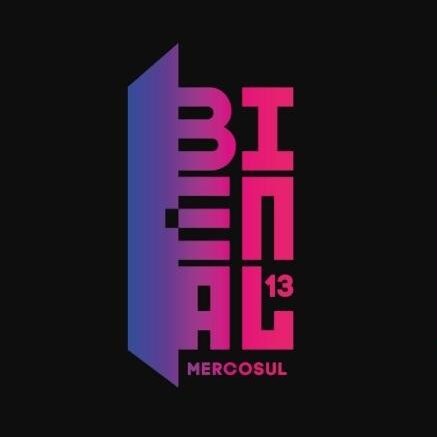
MERCOSUL BIENNIAL
CURATION OF THE 13th MERCOSUL BIENNIAL
Through the Torus Cultural Institute, the Transe exhibition, part of the 13th Mercosul Biennial, in partnership with PUCRS, was co-curated by Laura Cattani and Munir Klamt. The curators, together with the general curator Marcello Dantas and the co-curators Tarsila Riso and Carolina Lauriano, contributed to the creation of the Open Call Transe and participated in the Selection Committee of the artists in the call, analyzing approximately 800 works received. Both mentored the 18 artistic projects included in the call, developed by the selected artists and exhibited at the Caldeira Institution in 2022.
Laura Cattani is an artist, curator, researcher, cultural producer and acts as an agent in the field of contemporary art, always promoting artistic collaborations, partnerships with creators and institutional collaborations. Graduated in Performing Arts, with a master’s degree and doctorate in Visual Poetics from PPGAV/IA/UFRGS and post-doctorate at PPGAV/UnB, Laura Cattani also has a specialization in Project Management from ESPM, with experience in the area of Cultural Management and was awarded with Capes scholarship in her master’s and doctorate training, as well as during a research period in France as part of the Sandwich Doctorate Program at UPJV. Her doctoral research was nominated for the Capes Thesis Prize. She was a member of the Visual Arts sectoral collegiate. She taught at the UFPel Arts Center between 2020 and 2023, where she coordinated extension actions at Galeria A Sala. During her career, he held exhibitions and multimedia projects in several cities in Brazil, as well as Uruguay, Argentina, Germany and France. She served as deputy curator of the 13th Mercosul Biennial, under the general curatorship of Marcello Dantas. She acts as a cultural agent to promote the dissemination and appreciation of Contemporary Art as an instrument for reflection, questioning and transformation, and has been developing innovative projects with national projection, always seeking articulation with various multicultural and transdisciplinary groups, such as Sete Lados de uma Paisagem, Arquipélago_2020, Time as a Verb, Antinomy, Dark Field Narrative.
Munir Klamt is an artist, curator, professor and researcher in Contemporary Art. With a master’s and doctorate in Visual Poetics at UFRGS, his thesis, Metamedidas, received an Honorable Mention in the 2017 Capes Thesis Award. He completed a Post-Doctorate at the University of Brasília. Member of the MARGS curatorial committee. He taught at the Federal University of Rio Grande (FURG), where he coordinated research and extension projects and was a representative of the Institute of Letters and Arts on the Science, Technology and Innovation Committee – CCTI, an advisory body of the Dean of Research and Postgraduate Studies – PROPESP. He currently teaches at UFRGS in the area of Art and Technology, where he coordinates the Pinacoteca Barão de Santo Angelo Gallery. He has been working as an artist under the pseudonym Ío since 2003, in partnership with Laura Cattani. Creator of the Torus Cultural Institute. He was assistant curator at the 13th. Mercosul Biennial. His research is centered on the various manifestations of Time in Contemporary Art. Coordinates the research project “Intimate Obscurity of Time” by Munir Klamt (IA/UFRGS). His plastic and visual production encompasses different media, contexts and platforms, such as videos, installations, drawing, web art, performance or photography. He has held several exhibitions in Brazil and abroad, as well as video shows and multimedia projects.
VIRTUAL GALLERY
Caldeira Institute. Photography work by Anderson Astor and Marcelo Curia.
TRANSE
Trance is an oxymoron: it contains, wrapped within itself, the affliction that immobilizes, but also a secret solution, the promise of action that arises from another fabric of consciousness. We say secret because its language is not that of words, but rather that of glimpses, of a visceral and deep understanding. The antithetical capacity that certain poisons have to be a cure is part of trance. The exhibition is one of the branches of the 13th Mercosul Biennial, the first occurrence in its history in which a broad, unrestricted and welcoming channel was opened through an open call. The intention, the latent desire of this notice, was for it to be an instrument through which we could filter the certain Zeitgeist that a collective intelligence, formed by the sum of artists and their projects, predicted; to create an oracle that would have the arduous task of not only understanding our time, but of anticipating the diffuse possible futures.
Of the vectors of this Biennale, it is the dream that casts the longest shadow over Trance. Not only because the works seem to have been woven mainly from this material (with their premonitory impetus and immanent desire), but because the strangeness of their installation and sculptural inclination is infiltrated by an expressive and enigmatic theatricality (almost like the scenery of a dream in the past). waiting for the dreamer). It seems to us that Trance is skilled at evoking a deeper reverberation – paradoxically serious and very light at the same time –, almost a call that overflows the human and spills into an expanded body, connection and ghost, of machines, fungi, abyssal creatures, organs , artificial intelligences and insects, which propose to collectively dream the real.
Laura Cattani e Munir Klamt




